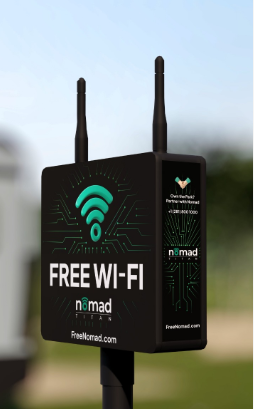Getting rid of an old device? Before you recycle or upcycle it, make sure your data is truly gone. Simply deleting files or doing a factory reset isn’t always enough. Residual data can often be recovered with the right tools. To protect your privacy, you need to securely erase your information before passing your device along.
Proper data wiping helps prevent identity theft, fraud, and unauthorized access to personal files. Whether you’re donating an old laptop, repurposing a smartphone, or engaging in responsible computer recycling, taking the right steps ensures your sensitive information stays out of the wrong hands. This guide will walk you through safe data erasure methods for different types of devices.
Why You Need to Fully Wipe Your Devices
When you delete a file, it doesn’t actually disappear. It just becomes invisible to the operating system until overwritten, as highlighted by the Cybersecurity and Infrastructure Security Agency’s guidelines on proper disposal of electronic devices.
Data recovery tools can scan a drive and restore deleted files unless they’ve been securely overwritten multiple times. This is why formatting alone doesn’t always guarantee complete data removal, especially on modern storage devices. Formatting a drive can make recovery harder, but it doesn’t always eliminate all traces of data. For full security, storage must be overwritten or reset using the right tools and techniques.
- Deleted Files Can Be Recovered– Many deleted files remain retrievable unless securely overwritten or wiped.
- Formatting Isn’t Enough– Basic formatting can remove file structures but may not fully erase the data itself.
- Data on SSDs Requires Special Methods– Unlike HDDs, SSDs use wear-leveling, which requires secure erase functions for complete data removal.
If your old device lands in the wrong hands, leftover files can be extracted, leading to potential data breaches. Taking the time to wipe your device ensures your information stays protected.
How to Wipe Data from Different Devices
- Computers and Laptops (HDDs and SSDs)
Hard drives and solid-state drives require different approaches to data wiping to ensure complete security. Before performing a secure erase, it’s essential to follow data backup strategies to ensure important files are not lost. Using cloud storage or an external hard drive allows you to retain critical documents, photos, and settings before wiping your system clean. HDDs store data in magnetic platters, making it easier to overwrite information effectively. SSDs, however, use a process called wear leveling, which distributes data across different memory cells, making traditional overwriting methods less effective. Understanding these differences ensures you use the correct technique for wiping your device.
- HDDs:
- Use a secure erasure tool that overwrites data multiple times.
- Physically destroying the drive is the only foolproof way to ensure total data removal.
- SSDs:
- Use the built-in secure erase feature found in BIOS or manufacturer software.
- Encrypt the drive before erasing to add an extra layer of protection.

- Smartphones and Tablets
Smartphones store sensitive data like passwords, messages, and personal photos, making them one of the most vulnerable devices when it comes to data security. Simply deleting apps or performing a quick reset doesn’t guarantee full data removal, as fragments of personal information may still be accessible. Many modern smartphones also store biometric data, payment credentials, and synced cloud accounts, all of which must be carefully removed before passing the device on. Ensuring a thorough wipe helps prevent identity theft and unauthorized access to personal information.
- iOS Devices:
- Perform a full factory reset in settings and remove the device from your Apple ID.
- Enable encryption before resetting to make data recovery nearly impossible.
- Android Devices:
- Encrypt the phone before performing a factory reset.
- Remove accounts, SD cards, and perform an extra overwrite if possible.
- External Drives and USB Flash Drives
Portable storage devices can retain recoverable data unless properly wiped. Many people forget that USB drives and SD cards often store financial records, tax documents, and work files, making them just as vulnerable as computers or smartphones. These devices require specialized erasure tools or encryption before disposal to prevent unauthorized access.
- USB Drives and SD Cards:
- Regular formatting doesn’t erase data. Use a dedicated secure erase tool.
- If the drive isn’t needed anymore, physical destruction is the safest method.
- External SSDs and HDDs:
- SSDs require secure erase commands to ensure all data is removed.
- HDDs should be wiped using multi-pass overwrite tools.
- Game Consoles and Smart Home Devices
Many people forget that gaming consoles and smart home devices store personal data, such as saved passwords and purchase history. This is especially true for streaming services, cloud saves, and payment details linked to gaming accounts. A full factory reset and unlinking accounts are critical steps to prevent unauthorized access when selling or donating these devices.
- Game Consoles:
- Sign out of all accounts and remove cloud saves before performing a factory reset.
- Remove external storage devices and format them separately.
- Smart Home Devices:
- Unlink from cloud accounts and reset to factory settings.
- Remove stored preferences and personal information before discarding or selling.
Verifying That Data Is Completely Wiped
Even after wiping a device, double-checking ensures no data remains. Some wiping methods may leave behind fragments of data that can still be recovered with specialized software. If you’re unsure whether your device has been fully wiped, using a data recovery service can help confirm whether any residual files remain. Running a final check ensures your sensitive files are completely erased, preventing any chance of unauthorized access. Taking this extra step adds an additional layer of security before recycling or upcycling your device.
- Use Data Recovery Software– Run a recovery scan to confirm files can’t be restored.
- Check Cloud Accounts– Ensure old devices are removed from any associated cloud services.
- Physically Destroy If Necessary– For highly sensitive data, consider drilling through storage drives before disposal.

What to Do with Devices After Wiping Data
Once your device is securely wiped, you can responsibly recycle or upcycle it. If recycling, check for certified e-waste recyclers who ensure environmentally safe disposal. If upcycling, consider turning an old computer into a dedicated home server, a low-power media streaming device, or a network-attached storage (NAS) unit for additional backups. Smartphones can also be repurposed into security cameras, alarm clocks, or universal remotes with the right apps.
- Recycle Electronics Properly– Find a certified e-waste recycling center that ensures safe and eco-friendly disposal. Some electronics retailers also offer recycling programs!
- Upcycle for a Second Life– Convert old laptops into media servers, repurpose smartphones as security cameras, or turn hard drives into external backup storage.
- Donate or Sell with Confidence– If your device is still usable, you can pass it along without worrying about leftover data.
Keep Your Data Safe Before Letting Go of Old Devices
Properly wiping your device before recycling or repurposing it is essential to protect your personal information. Deleting files or performing a simple reset isn’t always enough, so using secure data erasure methods ensures that your data stays out of the wrong hands. Whether you’re responsibly disposing of an old computer or turning a retired phone into a smart home gadget, a thorough wipe guarantees peace of mind and security.





